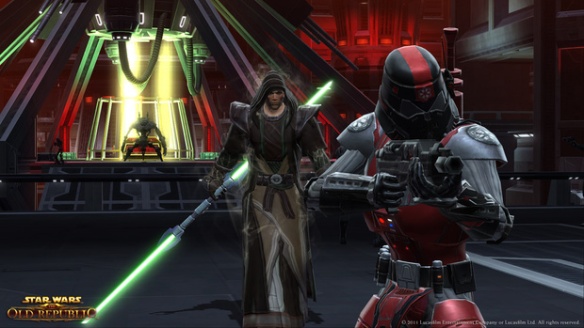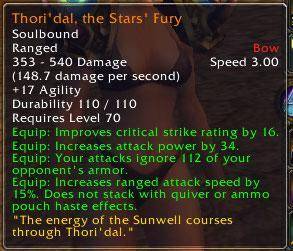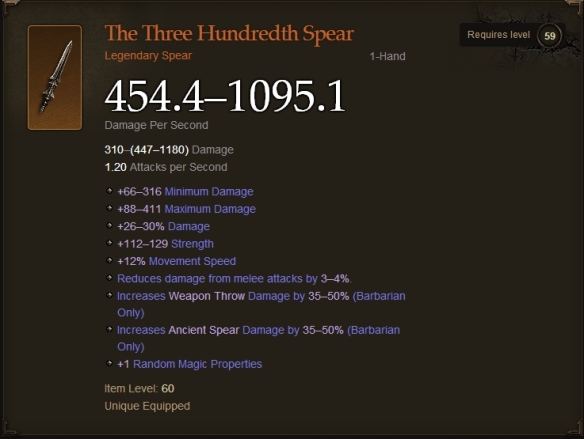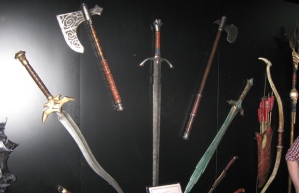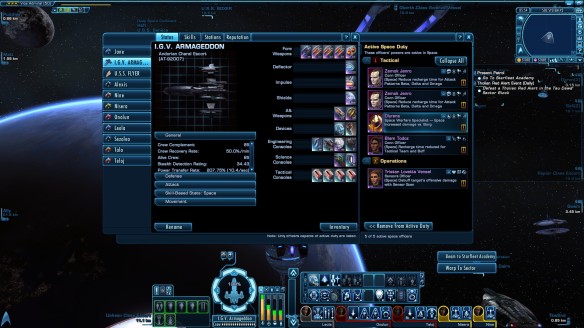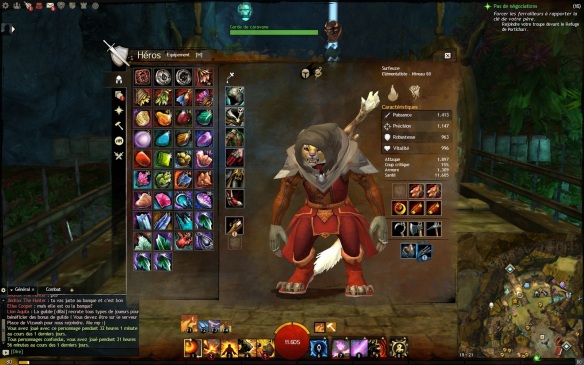Maybe you are new to the whole MMORPG or ARPG thing. Maybe you avoid the public channels and game forums in an effort to preserve your sanity. Maybe you just prefer to focus on immersion and try to forget that video games run on numbers like a nuclear reactor runs on fissile materials.
Eventually, though, you’re probably going to hear the term itemization being thrown around. Possibly your first thought will be to wonder if someone’s cat stepped on their keyboard and added a few extra letters to the word “item”.
If you asked most players, you’ll likely get an answer to the effect of:
Itemization is way a video game presents item progression both over the course of a character’s progression and a game’s inevitable expansions.
This is…true-ish. “Ish” because while this definition is accurate, it is a little deceptive in that it caters to one of the Great Illusions of Video Game Development. (Number #6, if you are curious, or counting)
Why the “Ish”, then?
To get to this, it helps to peel back the layers of presentation and look at what items are actually doing under the bloody flayed skin of the game.
When you move past the “item as a physical thing” (since it isn’t really even that in most video games, except very metaphorically) an item is simply an arbitrary categorization of ability and attribute progression.
Wait. What?
Think of it this way: When you level up in most games, what happens? Your character stats – hit points, mana (or equivalent), etc. go up. Your character probably gains (or at least gains the ability to gain) new abilities, call them spells, skills, powers or whatever. When you get an item you get…wait, more character stats, or more abilities.
In some games, there are actually systemic rules as to what goes on an item and what goes in the bucket of simple character advancement. In others, it’s complete legerdemain and prestidigitation. Note, there’s nothing wrong with either approach, and each has advantages and disadvantages based on a lot of other factors.
Even when one thinks of items – and by extension, itemization – as being “the things you drag from your inventory to your power tray that have a theoretical aesthetic physicality”, they can be very sneaky in where they appear.
Consider other things that are – functionally – 100% absolute items (no, not the vodka, though I do have an amazing horseradish vodka infusion I can sometimes be persuaded to share the recipe for):
- Glyphs in World of Warcraft.
- Duty officers in Star Trek Online.
- Gems in Diablo.
- Costumes in Marvel Heroes.
All of these things are items – they affect or apply abilities or attributes to your character, maybe numbers, maybe aesthetic visuals, maybe new powers. They all come in gradations that encourage a player to seek out better versions of them over the course of a character’s progression.
From a psychological point of view, itemization serves the same purpose thus as character power progression. That is, it is there to meter out rewards to stimulate a player’s lizard brain over as long a period as possible, since players playing more = less churn = longer longevity for a game.
Some may see this as some kind of free-to-play evil strategem, but the truth is it exists in games with an upfront box cost or, even, free games.
(Obviously, this can go too far, leading to a feeling of grind, but that’s a topic for a different article.)
One of the particularly insidious and under appreciated aspects to itemization has to do with the inverse relation between choice and difficulty.
A game may theoretically have, say, a hundred different items for a particular slot, but how many of those are actually valid? How many are too low level, or lower quality levels, or combinations of effects that can’t be used by the same build of a character? How many are inappropriate for a class, or involve attribute bonuses that do not scale as well as other attributes?
In other words, the total number of possible items is usually quite theoretical. In some games, this can rapidly lead to, for any particular character, there only ever being a very small number of viable items – or sometimes even just a single “best of slot” item.
It gets worse, though. Characters who are operating at very high levels of challenge in a game must often eschew aesthetics or play preferences to maximize their performance. This is particularly true of player-versus-player gameplay or group raids where social pressure itself can jack up the emphasis on very specific item sets.
A game that, at high levels of itemizations, is quite easy ironically offers more choices to a player for their character. The problem, of course, is that a game that is too easy will tend to result in higher rates of player churn with players eventually reaching a point where they grow bored and phase out of a game, either temporarily or permanently.
Ultimately, itemization is about the rhythm and pacing of a character’s progression through the game.
How powerful does a game want a player to ever be able to get? How hard should it be for a character to reach that height? What should the difference be between the worst-geared character and the best-geared character?
Are these differences qualitative (i.e., different abilities outright) or quantitative (i.e., better in degree, not kind)? How often should a character get a new, actually usable item? If a character is swapping out old items for new items too fast, when does that actually become a negative in that the player no longer really cares about what they are slotting?
What about simply access to items?
A common itemization design strategy is to make certain avenues produce the “best of” for a particular slot or class. For example, maybe the best axe in a game can only be gained by crafting, while the best bow in a game can only be gained by a rare drop off a difficult-to-farm monster. This is popular, design-wise, because it ensures that different types of gameplay – in this case crafting and rare spawn farming – remain useful to players.
This, of course, introduces yet another difficult design choice – trading rules.
Is there trading in the game? Are all items tradable? Okay, if not all items, what are the rules that determine which are tradable and which aren’t?
Mechanics like “Bind on Pickup” and “Bind on Equip” are primarily guards against inflationary game economies since if a game is escalating desired items (via this whole itemization thing we’ve been talking about) that means eventually the items you have will become useless, and if they aren’t tradable, they move out of the active economy.
The dangers of inflationary game economies have been widely talked about, but there are actually other, more subtle dangers that are much less often talked about. One of the worst of these involves the concept of analysis paralysis.
Analysis paralysis – or choice paralysis – happens when a person is facing so many choices for a particular course of action that they become incapable of making a rationally considered choice.
In this case, this means when a player is considering what is the best item to slot, or even what is the item one wishes to focus their anticipatory desire on. If most players can’t consider all the choices in a particular situation, then all the efforts at design in favor of normative decision making fall apart as players start to act in unpredicted ways, something that can drastically affect game balance and even things like zone distribution.
At the end of the day, a player’s concerns are not identical to a designer’s concerns.
A player wants to want items. A player wants to feel like the time they are spending in getting that anticipated item is worthwhile and fair. A player wants to feel like they have genuine, understandable choices.
A designer wants these things as well, of course, but the designer also has to consider the difficulty of coming up with qualitative-yet-competitive abilities, with the effects of itemization on play patterns and game mode distribution. The designer also has to worry about minimizing the feeling of grind while maximizing development efficiency and speed (art and designer time is neither cheap nor fast).
Longevity of the itemization trajectory has to be kept in mind, and the effect of expansions and raising the level cap, in games that have that as a mechanic. Many have decried Blizzard’s rapid obsolescence of previously top-of-the-line gear with each new expansion, but the truth is without this, creating a fair level of difficulty across the full range of characters at the previous progression cap is exceedingly, brain-stabbingly problematic.
This, of course, only scratches the surface of the behemoth that is itemization, but hopefully it gives people a better idea of the complexities of the discipline and some of the unenviable devil’s choices designers often have to make when making and balancing a video game.

